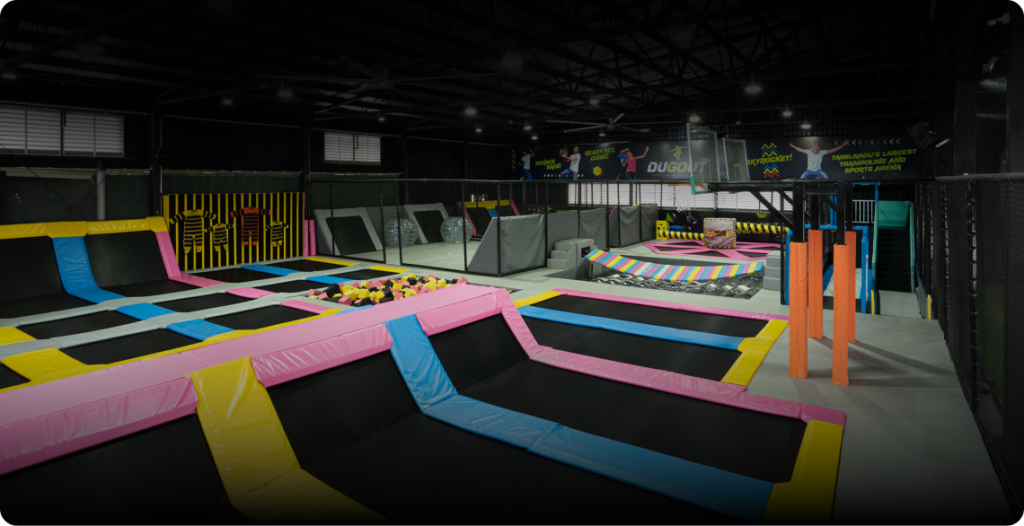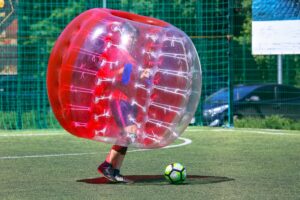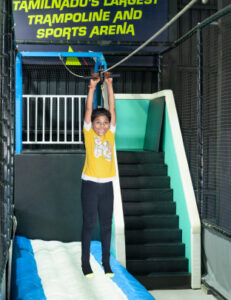
When it comes to indoor sports, safety is a top priority. Unlike outdoor sports fields, indoor facilities require special considerations to ensure the protection of players. As the physical space is confined, modifications may be needed to meet the specific safety requirements of each sport. When constructing or managing indoor sports complexes, it's crucial to keep sports safety advice in mind. In this regard, the Dugout Trampoline and Sports Arena stands out as a prime example of a top-notch indoor sports arena in Chennai. With a wide range of indoor sports options, the arena prioritises player safety and provides an enjoyable, secure environment for athletes of all levels.
Every sport has its own set of safety regulations. Coaches frequently instruct players to hydrate and stretch before games to avoid dehydration and muscular strains. Aside from these basic standards, each sport has its own requirements depending on the demands placed on athletes. Here are some safety problems for a few classic outdoor activities in a sports facility:
Indoor facilities should have netting or cushioning to prevent players from collapsing against walls or bleachers. These characteristics can help protect spectators from potentially harmful flying balls.

Facility management focuses on ensuring that every element of a facility functions properly. When a facility operates efficiently, its members stay healthy and play in a productive manner. If you are responsible for assuring safety in sports facilities, here are some of the greatest indoor sports safety practices.
Display Safety Signage
Signs alert athletes to potential hazards, so they understand what to watch out for. You may put up signs outlining the restrictions for using a specific location, such as a baseball track or field. Signage may also caution spectators to avoid a particular area during gameplay.
Keep the Venue Clean
Keeping places free of debris, filth, and other slippery surfaces should be a primary focus for sporting facilities. When running a facility, ensure the flooring is free of filth and water that could cause individuals to slip. When not in use, keep stray balls and other athletic equipment out of the way.
Also Read: What is Meant by "Artificial Turf", in the Context of Sports?
Inspect Equipment
Equipment that breaks while in use might be dangerous to players. Check equipment on a regular basis to ensure it is not broken or worn out, as prolonged usage may cause it to fail.
Mark Practice Areas
Different sports require different play spaces. Ensure that every play area is clearly defined, so athletes know where the limitations are. Each court may need to be labelled in multi-sport rooms with a different colour. Individuals can quickly differentiate the play area thanks to colour labelling. Players who are unsure of their surroundings may get injuries through stumbling or colliding.

If you're in charge of building a sporting facility, remember that players rely on safe design to feel at ease while entering the facility. A secure environment allows athletes to concentrate on improving their performance. Consider the following safety precautions for indoor sports.
Consider who will use your sports arena and if you have enough space to accommodate them. If you intend to host competitions or other activities with a large number of spectators, be sure you have enough space for them. Include proper safety precautions so that viewers may watch matches with a sense of security.
Athletes and spectators both want to move about quickly and safely. The design of a sporting venue should permit spectators to walk freely along the bleachers without the danger of flying balls. Players will also benefit from the flexibility to rapidly travel to multiple courts, particularly during tournament games. Divider curtains can help with both of these problems. These items enable spectators to move about freely without having to keep an eye out for balls.
With its focus on player safety and a wide range of indoor sports facilities, the Dugout Trampoline and Sports Arena sets a high standard for indoor sports stadiums. Whether you're a seasoned pro or just starting, this indoor sports arena in Chennai provides a secure and enjoyable environment for you to engage in your favourite indoor sports.